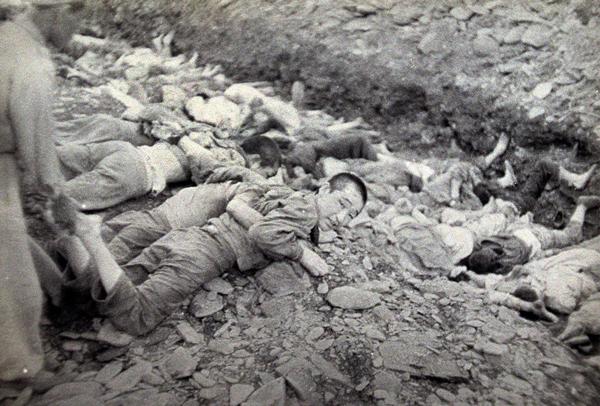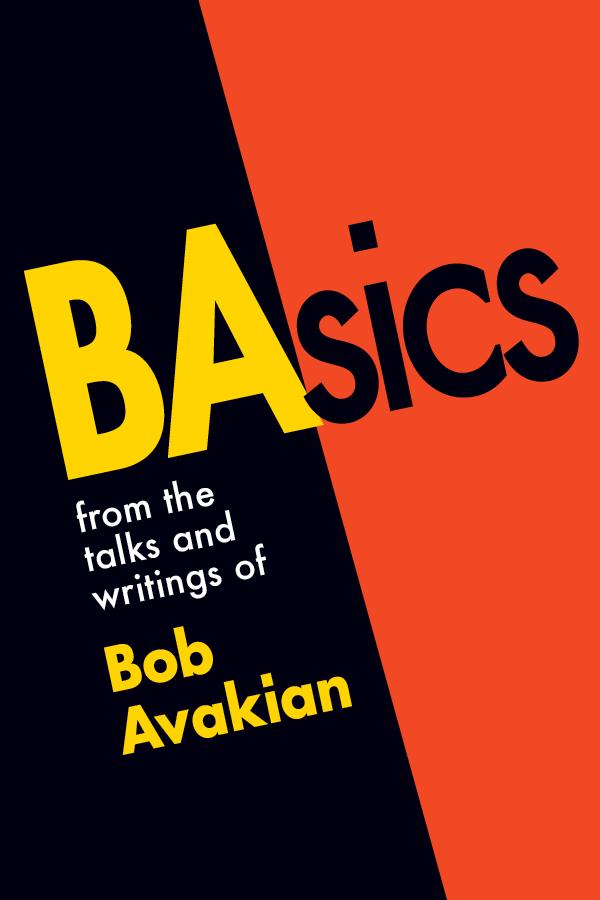Bob Avakian has written that one of three things that has “to happen in order for there to be real and lasting change for the better: People have to fully confront the actual history of this country and its role in the world up to today, and the terrible consequences of this.” (See “3 Things that have to happen in order for there to be real and lasting change for the better.”)
In that light, and in that spirit, “American Crime” is a regular feature of revcom.us. Each installment focuses on one of the 100 worst crimes committed by the U.S. rulers—out of countless bloody crimes they have carried out against people around the world, from the founding of the U.S. to the present day.
See all the articles in this series.
The Crime: Mass murder of millions; carpet bombing an entire country into rubble; use of chemical weapons against civilians; repeatedly threatening use of nuclear weapons; wholesale rape of women.


From a series of U.S. Army photos depicting the summary execution of 1,800 South Korean political prisoners over three days in July 1950 carried out by the U.S.-installed puppet Syngman Rhee.
In June 1950 the U.S. orchestrated a United Nations invasion of Korea. Of the 342,000 invading troops, 90 percent were American, and the entire force was under U.S. command. The U.S. and its allied war criminals killed millions of Koreans in three years of open warfare—estimates range from three to five million. The dead were overwhelmingly civilians.
Mass murder of civilians was systematic, and it was explicit U.S. policy. In the opening days of the war, U.S. bombers and troops carried out a massacre near the village of No Gun Ri in southern Korea. More than 250 people were murdered, most of them women, children, and the elderly. The U.S. Army commander told his troops that all civilians “are to be considered as enemy and action taken accordingly.” One witness said that an American captain said to his soldiers in No Gun Ri, “the hell with all those people. Let’s get rid of all of them.”
A representative of the No Gun Ri Victims’ Organization described what happened: “We were ordered by U.S. army, ‘Everybody, come together! We will escort you to the safe place.’ Following the order, we, local villagers, walked the road in the dark night, leading ox-carts, with children on our backs. About noon of next day, July 26, when our refugees’ march arrived at Nogun-ri area, 5-6 GIs blocked our way. They brought all the people and ox-carts onto parallel railroad tracks. After fully investigating all of us, they spoke to someone by radio. We Korean refugees didn’t know why. There we took a rest for a while.
“About that time, two U.S. airplanes flew over us. At that moment the GIs disappeared, something black fell down on us and exploded among the refugees. It was like a storm, with clouds of dust and pieces of rock bursting into the sky. The bloody pieces of bodies and oxen were all around. The rest of people alive ran into the tunnel under the railroad trestle.”
U.S. forces set up machine guns on both sides of the tunnel, and mowed people down when smoke bombs forced them to try to escape into the open. Literally hundreds of massacres like this were perpetrated by U.S. forces, and possibly thousands more by its South Korean allies, under U.S. direction. The U.S. did not even acknowledge the murders at No Gun Ri until 2001! Even then it refused to apologize for the atrocities its troops committed, and tried to cover up official documents that showed its commanders were ordered to “shoot” and “fire on” civilians.
In the Criminals’ Own Words:
U.S. Air Force General Curtis LeMay was an unapologetic mass murderer who directed the carpet bombing of Korea that, in his own words, “eventually burned down every town in North Korea anyway, and some in South Korea too.... Over a period of three years or so, we killed off—what—twenty percent of the population of Korea as direct casualties of war, or from starvation and exposure...” LeMay also said, in defense of the genocide unleashed by U.S. forces in Korea, “... it doesn’t bother me so much to be killing the so-called innocent bystanders.”
All Korea was in utter devastation by the end of the war. In the North, every building over one story was destroyed. In mile after mile of charred landscape, only chimneys and rubble remained. Bruce Cumings, a history professor at the University of Chicago, reported in his book The Korean War that the U.S. dropped over half a million tons of bombs and thousands of tons of napalm—jellied gasoline that sticks to the skin and burns at about 2,000 degrees Fahrenheit—on Korea. This was more than the bombs dropped in the entire Pacific theater in World War 2.
About 30 percent of North Korea’s population died in this bombing. If an equivalent percentage of the U.S. population at that time had died, the population would have been reduced by over 45 million people. Cumings also reported, “Rapes were extremely common. Koreans in the South will still say that that was one of the worst things of the war (was how) many American soldiers were raping Korean women.”


Korea was devastated by the end of the war. Millions were killed and in the North, every building over one story was destroyed. Here, in September 1950, early in the war, U.S. Marines take prisoners from one bombed village. (Photo: U.S. Department of Defense/U.S. Marine Corps/S. Sgt. John Babyak, Jr.)
The Criminals: U.S. president Harry Truman, who ordered the invasion of Korea and strong-armed the United Nations into approving what it called a “police action” and sending of troops from 16 countries and other forms of support from five countries. U.S. Army Generals Douglas MacArthur and Matthew Ridgway, and U.S. Air Force General Curtis LeMay—commanders of the U.S./UN forces who oversaw the genocidal land and air campaigns in Korea, and all of whom threatened to use nuclear weapons to attack neighboring China, which was then a revolutionary socialist country under the leadership of Mao Zedong.
Aiding and Abetting: Major U.S. media outlets, which systematically and repeatedly portrayed Koreans as subhumans who deserved death. Typical was Pulitzer Prize winner Hanson Baldwin, military correspondent for the New York Times, who Cumings said described “North Koreans as locusts, like Nazis, like vermin...”
The Criminal Past: The U.S. emerged from World War 2 as the victorious imperialist power. At the end of that war the U.S. dropped atomic bombs on Japan, massacring hundreds of thousands of civilians. The Japanese imperialists had dominated Korea, but when Japanese authority in Korea collapsed, the country was divided between a zone occupied by the Soviet Union in the North and the U.S. in the South.
This was supposed to be a temporary division pending countrywide elections to establish a unified regime. But reunification elections never happened. Fearing that elections would put nationalist or communist resistance forces allied with the Soviet Union and China in power, the U.S. built up a separate regime in South Korea. This made the division of the country a “fact on the ground.” The U.S. installed Syngman Rhee, a brutal puppet of the U.S., in power. Rhee imposed intense repression, mass arrests, and massacres of nationalists, radicals, communists, and others. The U.S. imperialists regarded the southern half of Korea and its puppet regime there as a major element in their plans to contain and perhaps wage war against the Soviet Union, and also as a step toward surrounding and threatening the People’s Republic of China, founded in 1949 after nearly 30 years of revolutionary warfare.
The Alibi: The U.S. claimed North Korea instigated the war by invading South Korea. In fact, Korea had been one country for hundreds of years. A year-long series of incursions into the North and provocations by the flunky South Korean government preceded the war. As war appeared imminent, Rhee murdered 100,000 people, both those accused as having leftist sympathies as well as other civilians. The Rhee regime also forced 300,000 peasants whose loyalties it questioned to join a state-sponsored “National Guidance League. In summer 1950, North Korean troops quickly began advancing into the South.
Truman expressed “concern” with “communist aggression and expansion” in Korea. In a major statement on June 27, 1950, he claimed that “communism has passed beyond the use of subversion to conquer independent nations and will now use armed invasion and war.” In fact, the U.S.—which already had warships from its Sixth Fleet circling the region thousands of miles from North America, and tens of thousands of ground troops on bases throughout the East Asia region, including Korea and Japan—began its massive military buildup and within a few months launched an invasion.
The Actual Motive: The Korean War was a murderous move by the U.S. to consolidate its imperialist domination of South Korea, to seize control of the North, and to move against communist and nationalist forces in Asia. The U.S. wanted to keep the Soviet Union at bay and to surround and contain the Peoples Republic of China, as key elements of its overall strategic goal of dominating the Pacific and East Asia. The U.S. was not able to accomplish all those objectives in the Korean War.


BAsics from the talks and writings of Bob Avakian
These imperialists make the Godfather look like Mary Poppins.
—Bob Avakian, BAsics 1:7
Repeat Offenders: After the war, the U.S. moved to build up South Korea as a political, economic, and military base from which it could face off against China and the Soviet Union, and impose its interests in the region. In 1975 it installed nuclear-tipped weapons in South Korea. It has maintained a large military presence in Korea for seven decades. It has repeatedly staged provocative acts aimed at North Korea, and literally ringed that country with its military forces. For decades, there were encampments of thousands of women forced into prostitution, built and maintained by the U.S. military and the South Korean government. The U.S. continues to threaten North Korea, including with nuclear weapons, while portraying North Korea as the “aggressor.”
